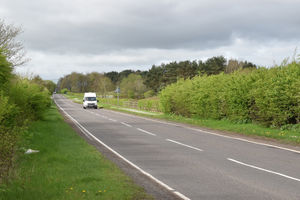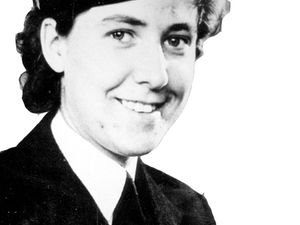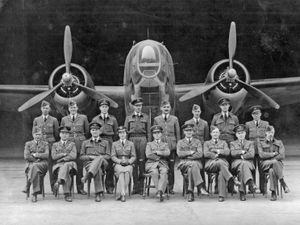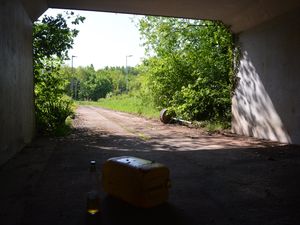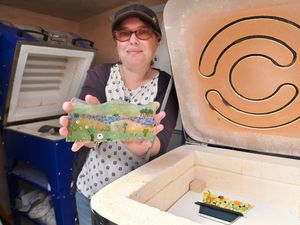Memorial honours busy Shropshire airfield that played 'massive part in winning World War Two'
About 30 people gathered at the unveiling of a memorial erected to honour the service and sacrifice of those who served at a wartime Shropshire fighter airfield.
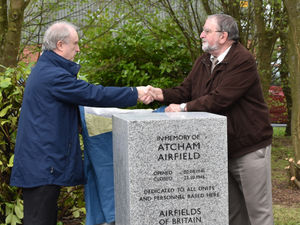
The granite memorial at the site of RAF Atcham was the first put up in the county as part of a rolling nationwide programme by a charity, the Airfields of Britain Conservation Trust.
Sited at the entrance to Atcham Business Park, which today occupies the heart of the old airfield, it was unveiled by Kenneth Bannerman, who heads the trust, and Councillor Colin Wildblood, the chairman of Atcham Parish Council.
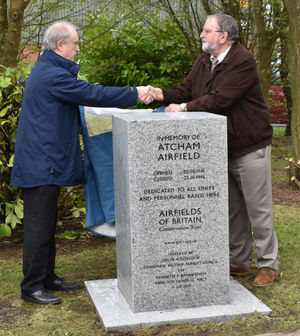
Atcham airfield was a base for operational Spitfire squadrons in the early part of the war but is perhaps best now remembered as an American fighter training base operating in particular the P-47 Thunderbolt fighter.
"This is all part of our nationwide campaign to honour Britain's disused airfields with our standardised memorials," said Mr Bannerman, who is from Glasgow, and was at the start of a busy three days for him in the region, with the unveiling of another memorial at the site of RAF High Ercall on Friday, and at the former Seighford airfield near Stafford on Saturday 13th.
"Atcham was a tremendously busy airfield which played a massive part in winning World War Two," said Mr Bannerman.
"We cannot afford to lose Britain's airfields from our everyday lives. They are incredibly important."
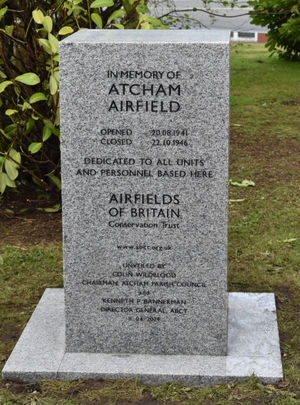
Among those at the ceremony was Barbara Maund, who turns 95 next month. Living now in Meole Brace, she used to live at Betton Strange and remembered seeing Atcham's aircraft in the air, including witnessing one tragedy.
"There was a crash at Betton Abbots, and I thought I would like to come in memory of that young American who gave his life," Miss Maund said.
"I saw what was happening. Presumably they got too close, and they clipped. One of them landed but the other crashed at Betton Abbots."
She recalled too two American officers coming to her home looking for accommodation.
"I heard them talking to my parents, but we had a house full of evacuees so it was out of the question."
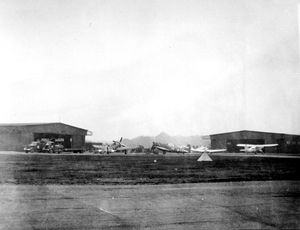
Mr Wildblood said Mr Bannerman had contacted the parish council clerk about the memorial and had asked her if she knew anybody who might be connected with the airfield.
"She rang me to relay what he had asked her, and I said I had a little bit of connectivity in that my father was stationed here and was on the base when my brother was born in January 1942. He cycled from here to Berrington to see him. How many times he did that, I don't know."
He said his father Reg Wildblood also served at Stornoway and Lossiemouth and for part of the time was an armourer on bombers, and he did not know how long he was at Atcham.
"He never wanted to talk to us much about his RAF career to be honest."
Also among the gathering was Malcolm Preston, an aviation enthusiast from Cressage, who has visited memorials up and down the country.
"Having the unveiling of one on the doorstep is brilliant," he said.
Another was George Cassell, now of Shrewsbury but originally from Berkshire, who has a particular interest in the history of Atcham airfield.
"My link to the airfield is that the former base commander, Ervin Miller, was commanding officer of my Air Training Corps squadron, long before I joined. It was Abingdon squadron of the ATC."
Others watching proceedings included members of the Shropshire Border Counties Area Military Vehicle Trust.
Mr Bannerman said Atcham was still hugely relevant today.
"It was a major World War Two airfield for both the RAF and the United States Army Air Force, and is perhaps best remembered for its use by the Americans for advanced training. The unit that was based here was eventually called the 495th Fighter Training Group.
"This provided training for fighter pilots who predominantly used the Republic P-47 fighter – the Thunderbolt.
"Towards the end of the airfield's life it became a relief landing ground for Tern Hill, which carried on until 1946, with the airfield closing in October of that year."
